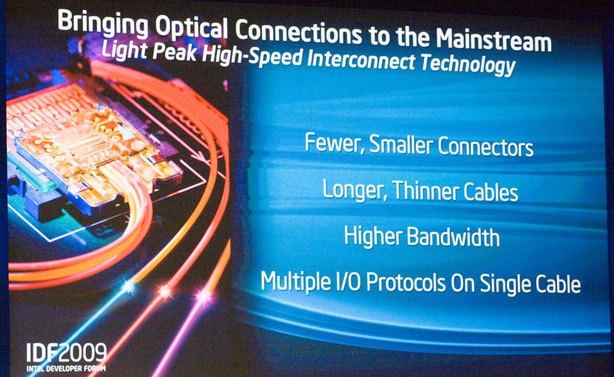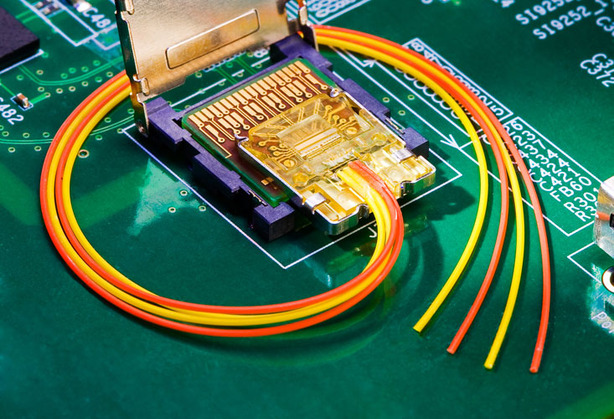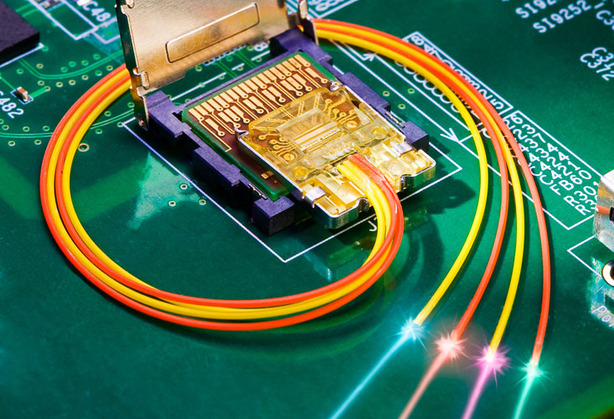
Seeing the light
After he'd finished talking about the new mobile processors, Perlmutter moved onto talking about other parts of the ecosystem, including updates on vPro, Intel's SSDs (there's nothing really new to report here) and WiMAX. Most of the details we'd already heard at some point before, but then Perlmutter dropped a bomb on us right at the end of his keynote.
He unveiled Light Peak, a new connectivity standard which uses fibre optics to transmit data between devices. Fibre optic data transfer isn't anything particularly new - it's been around in networking and storage for some time, but Light Peak is more than just another networking interface.
Perlmutter said that Light Peak can be used for not only networking, but also storage, video and audio transmission. What made it all the more impressive was that all this data could be passed down a single cable at speeds of up to 10Gb/sec at ranges of up to 100m.

We've seen something similar to this before from Matrox (namely the Extio, which is used for thin clients), but Intel is suggesting that Light Peak will be more versatile and could lead to fewer connections on ultra-thin laptops, which should mean there are fewer design limitations and constraints.

Sony is ready to back the technology, with Ryosuke Akahane, vice president of the Vaio business group, saying that "Sony is excited about the potential for Light Peak technology that Intel has been developing, and believe it could enable a new generation of high-speed device connectivity."
It's unclear when Intel expects to start making this technology widely available, but we don't expect to see it for at least a few years as the hardware is in a very premature state at the moment.

MSI MPG Velox 100R Chassis Review
October 14 2021 | 15:04








Want to comment? Please log in.